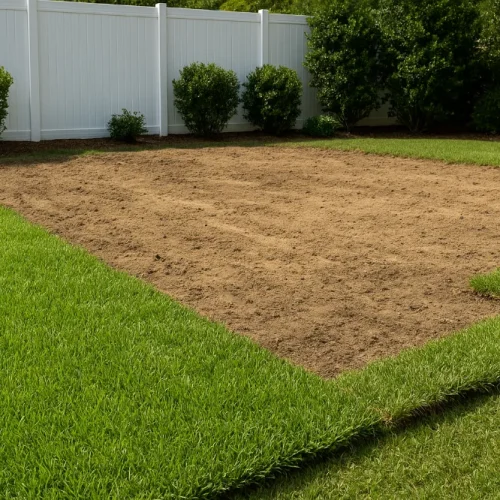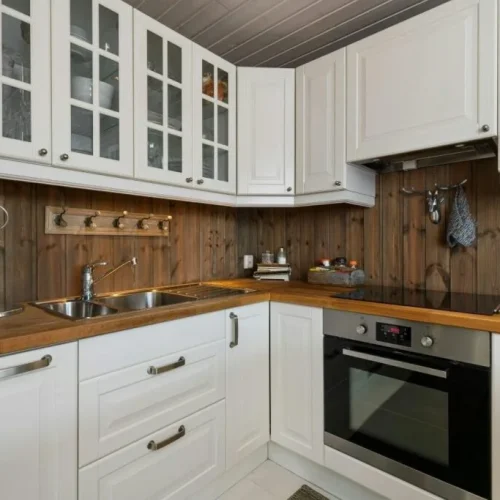
A driveway influences how a property is experienced long before a person steps inside. Its shape directs movement, its surface affects sound and texture, and its borders define transitions between built and natural space. When treated as part of the landscape rather than only a vehicle route, the driveway can strengthen visual coherence, improve drainage performance, support planting areas, and elevate curb appeal. Decorative stone is one of the most effective materials for this purpose. It is durable, versatile, and able to express a range of design styles—from modern minimalism to organic, naturalistic layouts.
This article approaches driveway landscaping with decorative stone from the perspective of a landscape designer. Rather than focusing only on appearance, it addresses structural preparation, installation strategy, drainage mechanics, and the role of accent stone features in creating balance and visual hierarchy. The goal is not simply to make a driveway look attractive, but to ensure that it performs effectively and behaves predictably over time.
The Functional Role of Stone in Driveway Spaces
Decorative stone does more than add style. It solves real-world problems related to soil movement, erosion, water flow, and long-term durability. Stone is stable under pressure, suitable for both load-bearing and non-load-bearing applications, and able to resist weathering. It also provides permeability options where runoff control is a priority.
Several forms of stone can be incorporated into driveway landscaping:
- Base aggregates that stabilize subgrade soil and support surface loads
- Surface gravel or crushed stone providing texture and visual continuity
- Edging stones and pavers that contain loose material and define borders
- River rock, cobble, and stone mulch that soften planting transitions
- Boulders and stone groupings that establish structure and focal points
Each type contributes differently to the driveway’s technical performance and visual composition. Understanding these functions guides the selection of the appropriate stone for each zone.

1. Installation Steps for a Durable Stone Driveway Surface
A stone driveway only performs well when installed with correct subgrade preparation and layering. Decorative stone added to an unstable foundation will shift, rut, sink, or wash out. Proper installation is both structural and hydrological.
Below is a standard installation sequence used by landscape contractors for gravel or crushed stone driveway surfaces:
Step 1: Assess Subgrade Soil Conditions
Identify whether the soil is clay-heavy, sandy, loamy, or rocky.
- Clay soils retain water and require improved drainage
- Sandy soils may need compaction and stabilization
- Mixed soils often benefit from geotextile separation layers
The goal is a stable, well-draining base.
Step 2: Grade for Runoff Direction
Driveways should have a minimum slope of 2% (about ¼ inch per foot) to shed water.
Water should flow away from the house and toward a receiving area such as:
- A drainage swale
- A dry creek bed
- A permeable infiltration zone
Incorrect grading is one of the top causes of driveway failure.
Step 3: Excavate and Install Geotextile Fabric
Excavate to an appropriate depth, typically 6–12 inches depending on vehicle load.
Lay geotextile fabric over the subgrade to:
- Prevent mixing of soil and gravel
- Reduce frost heave movement
- Improve load distribution
This fabric should be permeable to allow water to drain while maintaining structural separation.
Step 4: Install the Base Aggregate Layer
Add 3–8 inches of crushed stone base aggregate (commonly called “road base” or “crusher run”).
Compact in layers using a plate compactor or roller.
Base material should be angular, not rounded. Angular edges lock together, increasing density and stability.
Step 5: Add the Surface Stone Layer
The top layer is selected for both appearance and feel. Common choices include:
- Pea gravel (soft texture, casual feel)
- Decomposed granite (smooth and compactable)
- Crushed limestone chips (firm and angular)
Apply in a 2–3 inch layer and compact lightly to maintain permeability and mobility balance.
Step 6: Install Edging to Contain the Surface Material
Edging prevents spreading and reduces long-term reshaping work.
Suitable edging materials include:
- Steel edging (thin, modern, invisible from distance)
- Natural stone or block edging (structural and decorative)
- Concrete curbing (durable and permanent)
Without edging, gravel will migrate into lawn and planting areas over time.
When installed correctly, gravel and crushed stone driveways can withstand heavy use while remaining visually refined and structurally predictable.
4. Drainage and Erosion Engineering in Driveway Design
Driveways experience concentrated runoff because they are smooth travel surfaces. Poor drainage leads to water pooling, surface degradation, and foundation stress. Decorative stone is useful in drainage-focused driveway design because it is inherently permeable and works well with subsurface water movement systems.
Primary Drainage Principles
- Water must always have a defined destination.
- The driveway should never be the lowest point in the surrounding landscape.
- Drainage systems should be built into the design, not added after problems appear.
Common Drainage Techniques
Swales Along Driveway Edges
A shallow, sloping channel lined with stone that guides runoff toward a safe discharge location. Swales can be functional without visually appearing like drainage ditches when planted with appropriate grasses or groundcovers.
Dry Creek Beds
Decorative stone channels that mimic natural streambeds. They serve as overflow systems during heavy rain and blend aesthetically into the landscape. Larger river cobble is used for structure; smaller stone is layered above for texture.
Permeable Stone Driveway Surfaces
A permeable surface allows rainfall to enter the soil rather than run off into hardscape or storm drains. This reduces erosion and supports groundwater recharge.
Further reference on permeable pavement strategies from U.S. EPA.
French Drains and Subsurface Infiltration Trenches
Used when water needs to be moved underground rather than across the surface. These systems consist of perforated pipe wrapped in fabric and gravel, directing water away from the driveway without visible channels.
Managing Erosion on Sloped Driveways
Sloped driveways require additional stabilization:
- Use angular stone, not rounded, on slopes
- Increase depth of base layer for structural grip
- Install cross-slope drainage breaks or stone bands
- Anchor planting zones to reduce soil displacement
Good drainage design prevents annual repairs and extends the driveway’s service life substantially.
6. Accent Stone Features for Form and Composition
Accent stone features define the visual character of the driveway and influence how scale and proportion are perceived. They also serve functional roles such as guiding vehicles, framing views, and creating depth in planting areas.
Using Boulders and Stone Groupings
Boulders provide mass and permanence. They are most effective when:
- Buried one-third into the ground for natural placement
- Grouped in odd numbers to avoid symmetry stiffness
- Positioned to create rhythm along the driveway approach
Entrance Markers and Gateway Stones
Large upright stones or stacked stone columns near the driveway entrance signal arrival and create a threshold-like experience. They make the driveway feel intentional and framed rather than incidental.
Stone Walls and Retaining Structures
Retaining stones help stabilize grade changes near the driveway, especially where the land slopes. Dry-stacked stone walls provide drainage through joints and create a natural aesthetic, while mortared walls offer a more formal and finished look.

Stone Mulch in Planting Beds
Stone mulch:
- Reduces maintenance compared to wood mulch
- Controls evaporation and soil temperature
- Provides year-round texture
River pebble, polished gravel, or crushed granite can be used depending on the tone and style of the home.
Final Perspective
Driveway landscaping with decorative stone is both an engineering practice and a design craft. When done thoughtfully, it aligns structure, aesthetics, and environmental function. The driveway becomes a coherent part of the property rather than a surface apart from it. The key is to approach the work systematically:
- Prepare the foundation thoroughly
- Shape the grading with intent
- Use stone in zones, each serving a defined purpose
- Provide water pathways before water creates its own
- Anchor the composition visually with accent stone
The result is a driveway that performs predictably under weather and weight, ages gracefully, and reinforces the identity of the home. It is not just a place vehicles travel—it is the opening movement of the landscape’s story.
FAQs
Crushed stone or decomposed granite is typically best because the angular particles lock together and create a stable surface.
Most professional installations use 4–8 inches of compacted base aggregate and 2–3 inches of surface stone.
Yes. Edging prevents stone from spreading into the yard and helps maintain clean, defined driveway borders.
Proper compaction, a stable base layer, and using angular—not rounded—stone will significantly reduce rutting.
Yes, but only when installed with a strong sub-base and appropriate aggregate composition designed for load-bearing.
Heat-tolerant plants such as ornamental grasses, lavender, rosemary, sedum, and dwarf hollies are good choices.
Incorporate drainage features such as swales, dry creek beds, or permeable stone surfacing to guide water safely.
A geotextile fabric is recommended to keep soil from mixing with stone and to improve long-term stability.
Most stone driveways benefit from a light top-up every 1–3 years, depending on usage and climate.
Yes, compared to asphalt or lawn areas, stone driveways are low maintenance, though occasional raking and stone replenishment may be needed.













